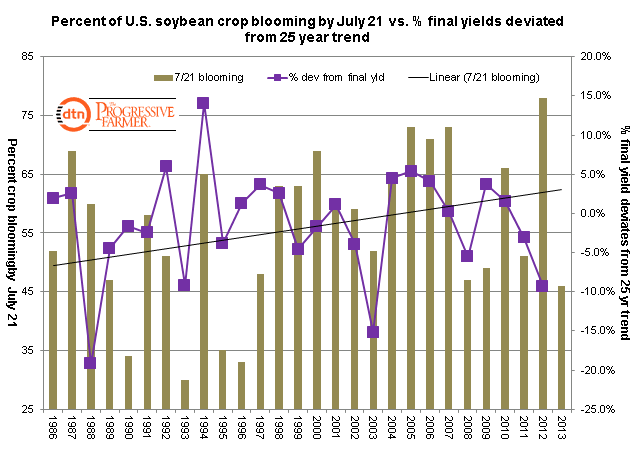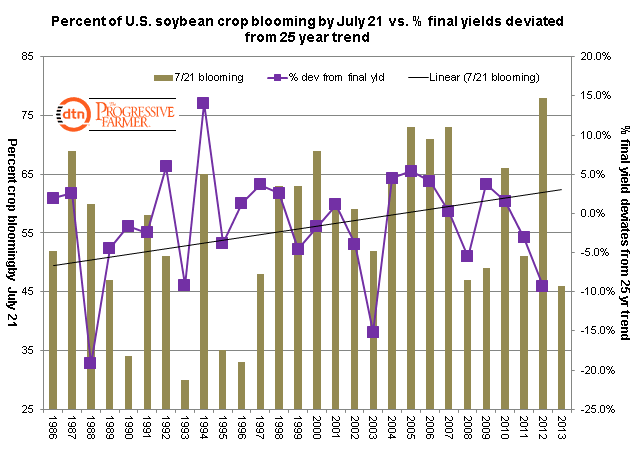Fundamentally Speaking
Percent Soybeans Blooming as of July 21
New crop soybeans have cracked this week, pressured by the collapse in the old crop futures, basis premiums, and more favorable growing weather for the 2013 crop.
Even though the forecasts look favorable with increased rain chances for much of the Midwest over the next two weeks and reasonable temperatures, new crop soybean futures should retain some weather premium given that a large part of the crop will remain vulnerable to a normal let alone early fall freeze.
This is due to the late plantings of the crop linked to heavy spring rains that first delayed timely corn plantings, which in turn made soybean seedings tardy as they are put in the ground after corn.
P[L1] D[0x0] M[300x250] OOP[F] ADUNIT[] T[]
The rains also delayed the winter wheat harvest resulting in late seedings of double-cropped soybeans.
Soybeans are also a photoperiodic crop whose growing cycle is influenced by the amount of daylight hours.
This means that the critical reproductive phase when the plant blooms and then set pods may result in shorter plants with less flowers, pods, and ultimately beans.
Of course, good growing conditions including a proper mix of sun and rain can overcome these early season obstacles to some extent.
This graphic shows the percent of the U.S. soybean crop blooming as of July 21 from 1986 to the present and tracks this vs. the percent that final U.S. soybeans deviated from its 25 year trend.
This year a mere 46% of the soybean crop was blooming on July 21 and that is the lowest percent for that date since 1996 when 33% of the crop was in the blooming stage.
Other years since 1986 when the percent of the crop blooming was less than this year includes 1990 at 34%, 1993 at 30%, and 1995 at 35%.
Three of those four years had final yields under trend with only 1996 bucking the trend with yields that year 1.3% above trend.
Note last year had the highest percent of the crop blooming by July 21 at 78% but final soybean yields last year were 9.3% below trend based on the very stressful summer growing conditions.
A final point is that while the 1986-2012 average blooming pace by July 21 is 56%, the trend has increased by about 10% over the past 25 years.
(KA)






Comments
To comment, please Log In or Join our Community .